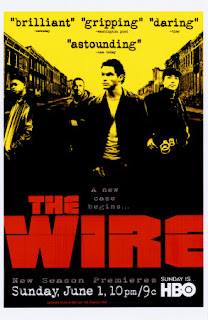Making the Wire

Last night we went to Making the Wire, a panel discussion about, well, what went into creating arguably the greatest television show ever made. David Simon was there, drinking a Pepsi, as was Seth Gilliam (Carver), Wendell Pierce (Bunk), Clarke Peters (Lester), Clark Johnson (Gus), and Richard Price. The first question was about how the show treats its audience, and whether Simon really believes his oft-quoted credo: “Fuck the audience. Fuck them to hell.” He does he said, in the sense that no one wants, or should want, the casual reader or viewer; instead he wanted the show to inspire passionate, edge-of-the-seat engagement.
This connection between reader and viewer wasn’t coincidental. In their praise, critics often called The Wire “Dickensian” and “Shakespearean,” likening it to great--in multiple senses of the word--tragedy. Simon praised Price’s “Clockers,” the novel that started it all by doing “for the inner-city drug trade what Steinbeck did for the Dust Bowl.” Like the novel, the show explores the moral complexities of issues, including the drug war and No Child Left Behind, by constantly shifting the point of view through its wide range of fully fleshed out characters. If you haven’t seen it, stop reading right now and go rearrange your Netflix queue. This post will be here after you’ve watched all 60 hours.
The actors told stories about what it was like to film with actual Baltimoreans, including asking corner boys to please give up their corner for a shot. Another day, the crew heard gunshots, so naturally everyone paged through the script, looking for the scene; the shots, however, turned out to be real. And Wendell Pierce spoke at length about how the show’s plotting let the actors themselves become fans of the other story lines. Leave it to Price, though, to keep the lovey-dovey hyperbole in check: “Everyone uses the word Dickensian . . . I don’t know. I mean, whatever.”